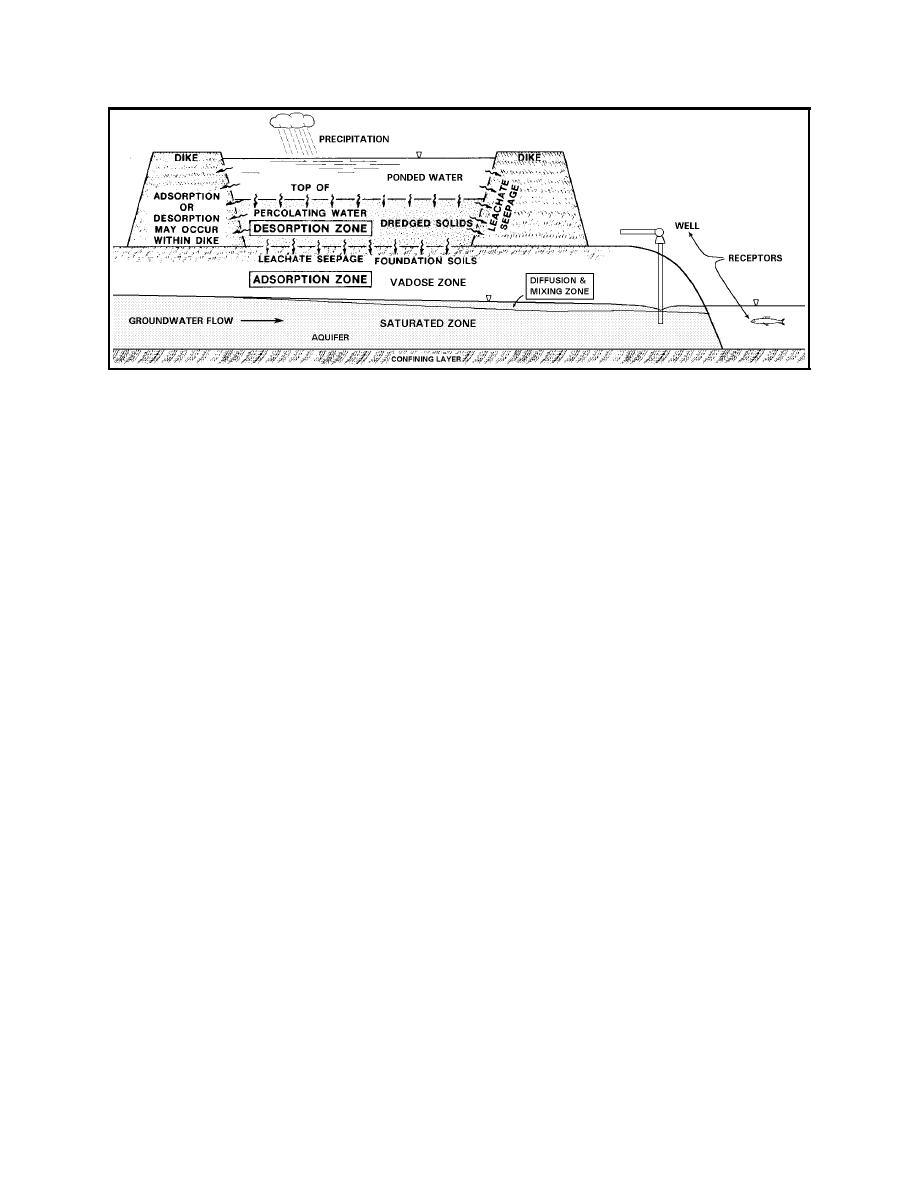 |
||
|
|
||
|
Page Title:
Figure 2. Model of dredged material leaching |
||
| |||||||||||||||
|
|
 ERDC TN-DOER-C16
July 2000
Figure 2. Model of dredged material leaching
redistribution reduces the contaminant concentration in the leachate as it passes through cleaner
layers of dredged material, foundation soils, and fine-grained soils in the vadose zone (unsaturated
zone).
The contaminant concentration of leachate exposed to a receptor is further impacted by diffusion
or mixing as the leachate is transported from the CDF locale to the receptor through the coarse-
grained layers of an aquifer. In effect, the contaminant concentration in the leachate is diluted by
the groundwater flow. Attenuation by adsorption to organic matter and interactions with fine-
grained materials will also occur in the aquifer, but the effect is generally small due to low
concentration of organic and clayey materials in the main regions of saturated groundwater flow.
Screening Approach. Based on the theoretical basis of leachate quality evaluations described
previously, a three-step screening evaluation is proposed:
1)Evaluate the source strength for its potential to generate pore water with unacceptable levels
of contaminants and identify the contaminants of concern (those that may pose a leachate
problem). Screening values for unacceptable concentrations would be based on the
receptors. For example, for human receptors the screening values would be drinking water
standards or risk-based values for drinking, bathing, or recreation. Similarly, for aquatic
organisms the screening values would be chronic toxicity criteria or risk-based values to
protect the food web and populations.
2)Evaluate the attenuation by adsorption of contaminants of concern in the CDF, saturated
fine-grained foundation soils, and vadose zone and determine which contaminants may
pose a leachate problem beyond the CDF locale.
3)Evaluate the diffusion (dilution) of the remaining contaminants of concern in the saturated
zone between the CDF and the receptor.
These three sequential processes are illustrated in Figure 2 showing leachate transported through
the desorption, adsorption, and diffusion zones for an upland CDF. The evaluations are discussed
3
|
|
Privacy Statement - Press Release - Copyright Information. - Contact Us - Support Integrated Publishing |